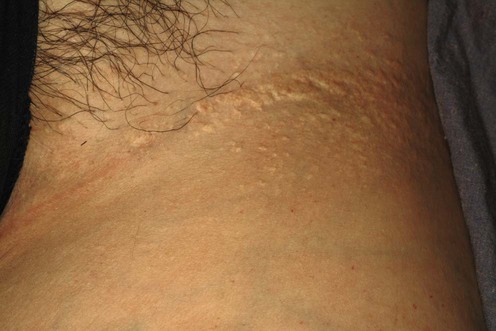The tests are expensive and rarely essential to confirm the diagnosis. Neldner KH. Clin Dermatol 1988; 6: 1–159. For the interested physician, patients, or their families, this is the only book devoted solely to PXE. It is out of print from the publisher but can be obtained in paperback with full color clinical photos from the National Association for PXE, 8760 Manchester Road, St Louis, MO 64144–2724; email: NAPEstlouis@sbcglobal.net.
Pseudoxanthoma elasticum

Specific investigations
Pseudoxanthoma elasticum.
![]()
Stay updated, free articles. Join our Telegram channel

Full access? Get Clinical Tree








